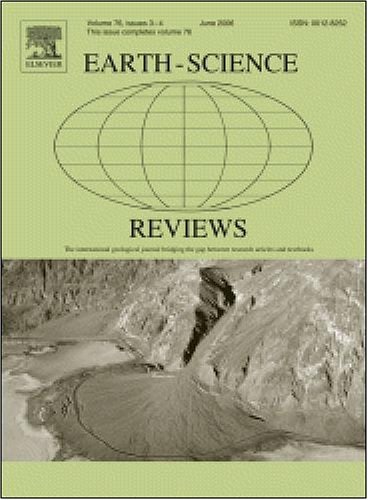Role of mineral-forming bacteria in mangrove rhizosphere in enhancing coastal soil stability, carbon sequestration, and heavy metals removal
IF 10
1区 地球科学
Q1 GEOSCIENCES, MULTIDISCIPLINARY
引用次数: 0
Abstract
Mangrove forests are found in intertidal zones of tropical and subtropical regions, playing crucial roles in coastal protection. They serve as natural buffers against wave dynamics, effectively mitigating coastal erosion. Despite covering a small fraction of coastal areas, mangrove forests sequester more carbon dioxide compared to terrestrial vegetation. However, they face significant pressures from both natural forces and human activities, such as coastal development and industrialization, leading to contamination with organic and inorganic pollutants. The accumulation of toxic metals in mangrove ecosystems is of particular concern. This poses significant risks to these forests, which serve as vital habitats and nurseries for marine organisms. Heavy metals accumulate in fish and can potentially enter human food chains through consumption. Mangroves are capable of adapting stressful conditions due to their interaction with soil microorganisms. Mineral-forming bacteria residing in the rhizosphere of mangrove trees play a pivotal role in this context. These bacteria aid in stabilizing heavy metals through mineral precipitation and convert inorganic carbon into a stable carbonate mineral, contributing to carbon sequestration. The biomineralization enhances sediment stability and supports the overall resilience of mangrove ecosystem. While the microbial processes hold a great promise, their role remain underexplored and not fully integrated into the current restoration strategies. Bridging this knowledge gap through interdisciplinary research is essential for developing more sustainable and effective approaches to mangrove conservation.
红树林根际成矿细菌在增强海岸土壤稳定性、固碳和重金属去除中的作用
红树林分布在热带和亚热带的潮间带,在海岸保护中起着至关重要的作用。它们是抵抗波浪动力的天然缓冲,有效地减轻了海岸侵蚀。尽管红树林只覆盖了沿海地区的一小部分,但与陆地植被相比,红树林吸收的二氧化碳更多。然而,它们面临着来自自然力量和人类活动的巨大压力,例如沿海开发和工业化,导致有机和无机污染物的污染。有毒金属在红树林生态系统中的积累尤其令人关切。这对这些森林构成了重大风险,而这些森林是海洋生物的重要栖息地和苗圃。重金属在鱼类体内积累,并有可能通过食用进入人类食物链。红树林由于与土壤微生物的相互作用而能够适应压力条件。在这种情况下,居住在红树林根际的矿物形成细菌起着关键作用。这些细菌通过矿物沉淀帮助稳定重金属,并将无机碳转化为稳定的碳酸盐矿物,有助于碳封存。生物矿化增强了沉积物的稳定性,支持了红树林生态系统的整体恢复力。虽然微生物过程有很大的希望,但它们的作用仍然没有得到充分的探索,也没有完全融入当前的恢复策略。通过跨学科研究弥合这一知识鸿沟对于制定更可持续和更有效的红树林保护方法至关重要。
本文章由计算机程序翻译,如有差异,请以英文原文为准。
求助全文
约1分钟内获得全文
求助全文
来源期刊

Earth-Science Reviews
地学-地球科学综合
CiteScore
21.70
自引率
5.80%
发文量
294
审稿时长
15.1 weeks
期刊介绍:
Covering a much wider field than the usual specialist journals, Earth Science Reviews publishes review articles dealing with all aspects of Earth Sciences, and is an important vehicle for allowing readers to see their particular interest related to the Earth Sciences as a whole.
 求助内容:
求助内容: 应助结果提醒方式:
应助结果提醒方式:


